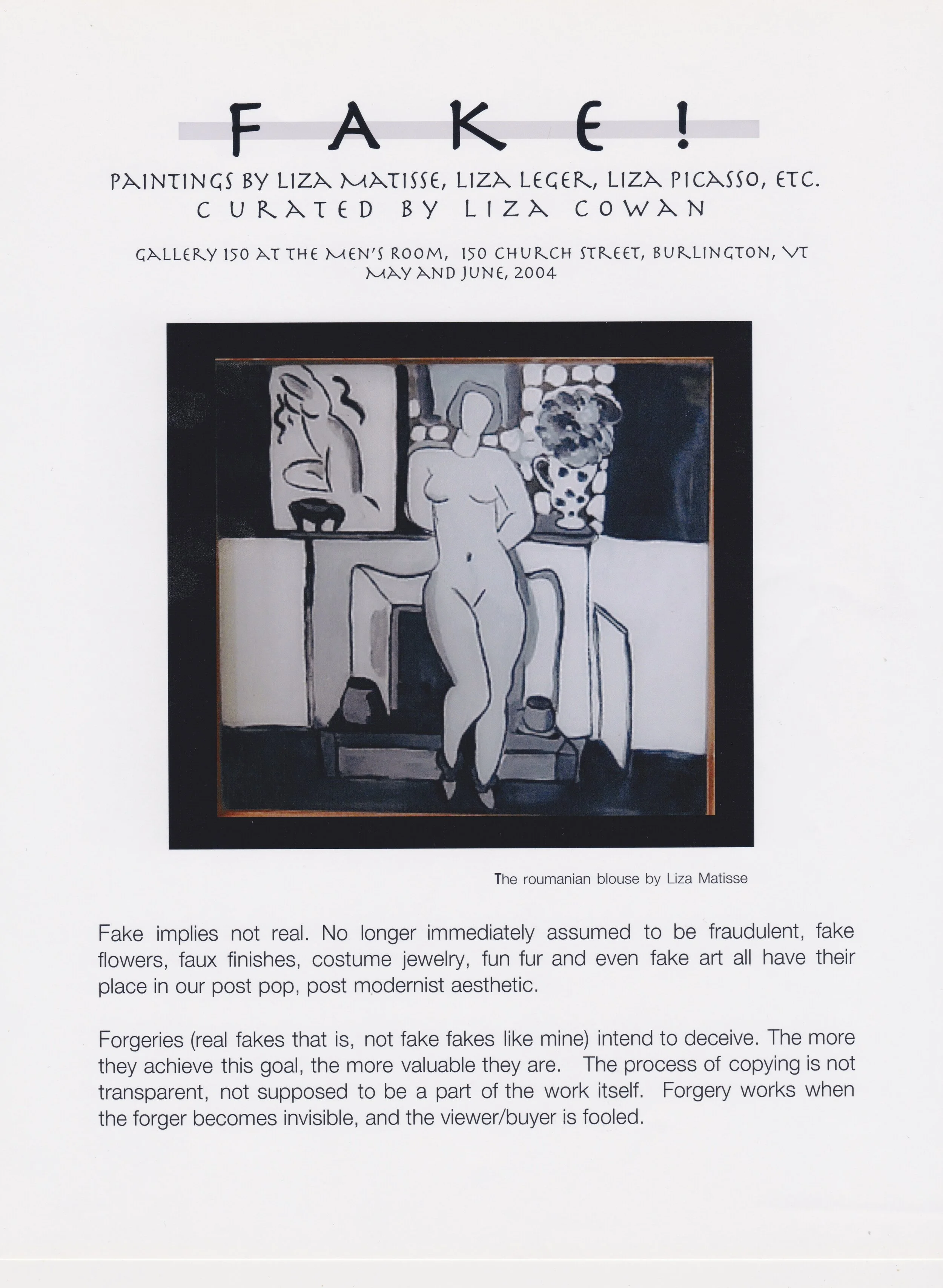FAKE! Paintings by Liza Picasso, Liza Leger, and Liza Matisse
“During the nineteen-thirties, when the fabrication of counterfeit Picassos was at its height - his works being the most often counterfeited because they rated the highest prices - an old journalist friend took a small Picasso painting belonging to some poor devil of an artist to Picasso himself for authentication, so the impoverished artist could sell it. ‘It’s false’ Picasso said. The friend took him another little Picasso, from a different source, and then a third. ‘It’s false’ Picasso said each time. ‘Now listen, Pablo’ the friend said. ‘I watched you paint the last picture with my own eyes.’ ‘I can paint false Picassos just as well as anybody,’ Picasso replied. He then bought the first Picasso at four times the price the poor artist might have hoped it would fetch”
—Janet Flanner, Janet Flanner’s World, Uncollected Writings, 1932 -1977Watch a video of me discussing my FAKE! series, below.

Promotional postcard for the first gallery showing of the FAKE! Series.

Liza Picasso. Portrait of Marie Therese. Reverse Painting on old window.

Liza Matisse. The Romanian Blouse. Reverse painting on glass. Old window.

Liza Leger. Acrylic on paper.

Liza Woman Ray. Reverse painting on glass


Liza Matisse. The Yellow Hat

Liza Leger 2002 reverse painting on old window
Watch this video of me making my FAKE series.
2004 Exhibition catalog
"Fake implies not real. No longer immediately assumed to be fraudulent, flowers, faux finishes, costume jewelry, fun fur and even fake art have a place in our post Pop, post modern aesthetic.
”Forgeries (real fakes that is, not fake fakes like mine) intend to deceive. The more they achieve this goal, the more valuable they are. The process of copying is not transparent, not supposed to be a part of the work itself. Forgery works when the forger becomes invisible, and the viewer/buyer is fooled.”

